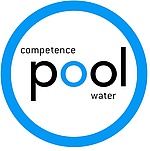Damming of rivers lead to a reduction of flow velocities and to a slow-down of the flow turbulence in the impoundment area with the resulting settlement of bed load and suspended material. The remobilization of sediment is desirable for both water resources and environmental reasons. Consequently, the removal of sediment causes an increase of sediment concentration in the downstream sections of a dam during a flushing event. Furthermore, it could be observed that huge amounts of sediment are deposited on river banks downstream of the dam, which are remobilized and added to the flow during subsequent minor floods. As a result of this transport of sediments the clogging of riverbeds and the out of this resulting reduction of porousness could be observed. The clogging of river beds has an impact on the habitat of fauna and flora, as well as the interaction of surface water and groundwater. In the course of this work package, the results of the model tests of clogging processes of the river Lutz in Vorarlberg in Austria are presented as well as a most comprehensive literature review of the impact of clogging for fish and benthic organisms was performed. A 1:1 physical model in a flume was built in the laboratory of the <st1:place w:st="on"><st1:placetype w:st="on">Institute</st1:placetype> of<st1:placename w:st="on">Hydraulic Engineering</st1:placename></st1:place> and Water Resources Management at Graz University of Technology. Measurements of percolation, density, or concentration were performed amongst others.
The review of the „Effects of sediment clogging following a reservoir release on the aquatic organisms of streams” contains definitions of colmation types, the development of colmation, its ecological importance as well as the impacts of artificial floods and high concentrations of suspended fine sediments to the aquatic life. In general the ecological impacts of sediment clogging are the loss of habitat and as a consequence also the loss of nutrition. The loss of habitat concerns the juvenile development of some species as well as the loss of a hideaway during catastrophic events such as floods, when the probability of drifting is high.
As a result colmation processes cause a shift in the composition and abundance of aquatic species. In general a declination of EPT – Taxa (Ephemeroptera, Plecoptera, Tirchoptera) and an inclination of digging organisms, such as oligochaetes and chironomid larvae.
For those fishes that have to make redds for spawning the sediment clogging means a reduction of spawning habitat. This leads to a reduced reproduction of those species.
This project was co-funded by the Federal Ministry of Economics and Labour of the Republic of <st1:country-region w:st="on" style="font-family: verdana, arial, helvetica, sans-serif; line-height: 17.7333px; background-color: rgb(248, 248, 248);"><st1:place w:st="on">Austria</st1:place></st1:country-region>, as well as by the provinces Styria, Carinthia, and <st1:place w:st="on" style="font-family: verdana, arial, helvetica, sans-serif; line-height: 17.7333px; background-color: rgb(248, 248, 248);">Tyrol</st1:place> in the scope of the competence network Water Pool (www.waterpool.org). The Vorarlberger Illwerke AG is the economic partner, who contracted this project and co-funded it as well.

